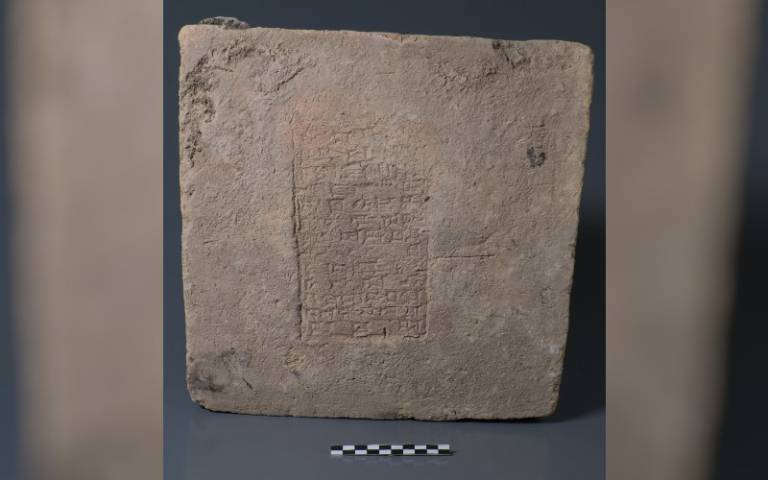Mesopotamian bricks unveil the strength of Earth’s ancient magnetic field
20 December 2023
A study of Mesopotamian bricks, involving Mark Altaweel (UCL Institute of Archaeology), has provided an important insight into the Earth's ancient magnetic field.

The collaborative research, published this week in the Proceedings of the National Academy of Sciences (PNAS), describes how changes in the Earth’s magnetic field imprinted on iron oxide grains within ancient clay bricks, and how scientists were able to reconstruct these changes from the names of the kings inscribed on the bricks.
At the time they were made, each brick was inscribed with the name of the reigning king which archaeologists have dated to a range of likely timespans. The strength of the planet’s magnetic field was imprinted upon the minerals when they were first fired by the brickmakers thousands of years ago.
The research team analysed the latent magnetic signature in grains of iron oxide minerals embedded in 32 clay bricks originating from archaeological sites throughout Mesopotamia. To measure the iron oxide grains, the team chipped tiny fragments from broken faces of the bricks and used a magnetometer to precisely measure the fragments.Together, the imprinted name and the measured magnetic strength of the iron oxide grains offered a historical map of the changes to the strength of the Earth’s magnetic field.
By mapping out the changes in Earth’s magnetic field over time, this data also offers archaeologists a new tool to help date some ancient artefacts, where previously this may have been problematic.
According to Mark Altaweel (co-author of the study):
“We often depend on dating methods such as radiocarbon dates to get a sense of chronology in ancient Mesopotamia. However, some of the most common cultural remains, such as bricks and ceramics, cannot typically be easily dated because they don’t contain organic material. This work now helps create an important dating baseline that allows others to benefit from absolute dating using archaeomagnetism.”
The collaborative research was carried out with funding from the U.S. - Israel Binational Science Foundation.
Read more
Image: Brick dates to the reign of Nebuchadnezzar II (ca. 604 to 562 BCE) based on the interpretation of the inscription. This object was looted from its original context before being acquired by the Slemani Museum and stored in that museum with agreement from the central government. Image courtesy of the Slemani Museum.
 Close
Close

